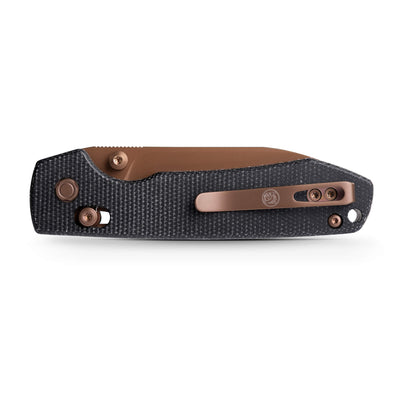Unlock the Secret to Choosing the Ultimate Fixed Blade Camping Knife!
When it comes to outdoor adventures, having a reliable camping knife is not just a luxury; it's a necessity. A good fixed blade camping knife can be a versatile tool, serving various purposes such as preparing food, setting up camp, or even self-defense in unexpected situations. Unlike folding knives, which can be more compact and convenient, fixed blade knives offer superior strength and durability, making them ideal for rugged environments. In this article, we'll explore the essential criteria for selecting a high-quality fixed blade camping knife, helping you navigate through the myriad of options available in the market.

Understanding Fixed Blade Camping Knives
A fixed blade camping knife is characterized by its solid, non-folding blade, which is securely attached to the handle. This design offers several advantages over folding knives, particularly in terms of strength and reliability. Fixed blade knives are less likely to break under heavy use, making them perfect for tasks that require significant force, such as chopping wood or carving. Additionally, the ease of access and quick deployment of a fixed blade knife can be crucial in urgent situations. Outdoor enthusiasts often appreciate the straightforward nature of these knives, as they don’t have complicated mechanisms that might fail when most needed. For many, the simplicity and robustness of fixed blade camping knives make them a preferred choice for outdoor activities.
Key Features to Consider
When selecting a fixed blade camping knife, several critical features should be taken into account. These include blade material, blade length, handle design, and weight, all of which significantly influence the knife’s performance and usability in camping environments.
Blade Material
The choice of blade material can greatly affect the knife's performance. Common options include stainless steel and carbon steel. Stainless steel is known for its corrosion resistance, making it a good choice for wet environments, while carbon steel tends to hold an edge longer but may require more maintenance to prevent rust. Each material has its pros and cons, so consider the typical conditions you will encounter while camping. For instance, if you often camp in moist areas, a stainless steel blade might be more suitable.
Blade Length
Blade length plays a crucial role in determining a knife's functionality. A shorter blade may offer more control for tasks like slicing or detailed work, while a longer blade can be more effective for chopping or heavier tasks. Many campers find that a blade length between 4 to 6 inches strikes a good balance between versatility and ease of handling, making it suitable for a variety of camping needs.
Handle Design
The handle design is another vital consideration, as it impacts grip and overall comfort during use. Look for ergonomic designs that fit comfortably in your hand, as well as materials that provide a secure grip, even in wet conditions. Common handle materials include rubber, wood, and synthetic composites, each offering different tactile experiences and levels of durability. A well-designed handle can prevent slippage, reducing the risk of accidents during tasks.
Weight and Portability
Weight is a significant factor when it comes to carrying your camping knife. A heavier knife might be more durable but can become cumbersome over long hikes. Conversely, a lighter knife may be easier to carry but could compromise on strength. Ultimately, the best weight for your knife will depend on your personal preferences and the types of camping trips you regularly undertake. Always consider how much you are willing to carry and the tasks you expect to perform with your knife.
Comparing Different Options
With so many fixed blade camping knives available, comparing different options can seem overwhelming. Start by assessing the quality of materials used, as this can often indicate the knife's overall durability and performance. User reviews are invaluable resources for gauging reliability and real-world performance. Look for knives that have received positive feedback for their comfort, ease of use, and effectiveness in various outdoor tasks. It’s also helpful to consider personal recommendations from friends or seasoned campers who can share their experiences, guiding you toward choices that have proven successful in the field.
Maintenance and Care Tips
To ensure the longevity of your fixed blade camping knife, regular maintenance is essential. After each use, clean the blade with warm, soapy water to remove dirt and debris, and dry it thoroughly to prevent corrosion. Sharpen the blade regularly to maintain its cutting efficiency; a dull knife is not only ineffective but can also be dangerous. Proper storage is equally important; consider using a sheath to protect the blade when not in use, and store it in a cool, dry place. By following these simple care tips, you can keep your knife in optimal condition for many camping trips to come.
Final Thoughts on Selecting the Right Knife
Choosing the right fixed blade camping knife can greatly enhance your outdoor experiences, making tasks easier and more enjoyable. By understanding the key features to consider, comparing options based on quality and user experiences, and maintaining your knife properly, you'll be well-equipped to select the best option for your needs. Remember that the ideal knife for you will depend on your personal preferences and the specific requirements of your camping adventures. Take the time to consider these factors, and you'll unlock the secret to a successful camping experience!








